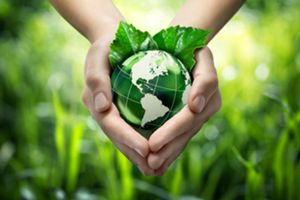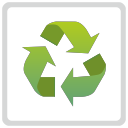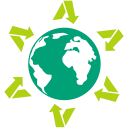
Sustainability
Emission | Energy | BAT


Greenhouse gas emissions are more than 50 percent higher than in 1990, causing long-lasting changes to our climate system, which threatens irreversible consequences if we do not act.
To reduce emissions, industries should use the Best Available Techniques (BAT) within their industry (read more about BAT below). An important aspect of reducing emissions is to understand the sources; How well do you utilize your raw materials and control shortages during manufacturing? Waste of raw materials can end up as emissions to water, air and soil, or it can be recycled. Working systematically to reduce waste and emission will reduce cost and the carbon footprint of the company.
Mapping current situation is a good start. Example of wastewater indicators are COD (Chemical Oxygen Demand), BOD (Biological Oxygen Demand), Nitrogen and Phosphorus. These indicators can be used to estimate shortages. Lean Tech has identified wastage of 1.4 million $ / year for a company by mapping emissions.
Lean Tech has also prepared an IPPC (Integrated Pollution Prevention and Control) report for a customer, where all emissions and waste were described and quantified. The company's practice was also compared with BAT (Best Available Techniques).

The Norwegian Environment Agency requires that Norwegian companies document their emissions to soil, air and water to ensure that they are within the requirements of the permit. In 2010 came a demand from The Norwegian Environment Agency to establish a monitoring program for emissions to air and water.
Lean Tech helps companies develop complete Monitoring program or part of it, like calculation of uncertainties. The monitoring program should focus on achieving the lowest uncertainty for the greatest emissions.
When preparing a monitoring program it's important to consider the normal manufacturing conditions to achieve representative sampling. Seasonality needs to be taken into account, and measurement uncertainty for the analyses must be determined. You can read more about the monitoring program for air emission developed for Allnex.

The European IPPC (Integrated Pollution Prevention and Control) Bureau has developed Reference Documents; BREFs, describing BAT (Best Available Techniques).
The BREFs are covering the descriptions of a range of industrial processes as well as the techniques, emission levels, applicable alternative processes that can be applied.
The BREF documents are the outputs of an information exchange of the technical group consisting of experts from industry, Member State authorities, research institutes and NGOs. Each BREF is the outcome of a multiple year process involving up to 100 experts.
Lean Tech has compared the customer's operation with the relevant BREF to identify areas of improvement.
Lean Tech has experience with the following BREFs (the list will evolve depending on customer need):
The Sustainable Development Goals are the blueprint to achieve a better and more sustainable future for all. They address the global challenges we face, including poverty, inequality, climate change, environmental degradation, peace and justice. The 17 goals defined by the United Nations are:

These goals can be a starting point when defining your own Sustainable Development Goals (SDGs). Lean Tech can assist you in the process of setting SDGs. Reach out to us if interested.
Lean Tech AS | Kristoffer Robins vei 13
0047 481 23 070
Oslo, Norway
L - Look for solutions
E – Enthusiastic
A – Analytical
N - Never give up